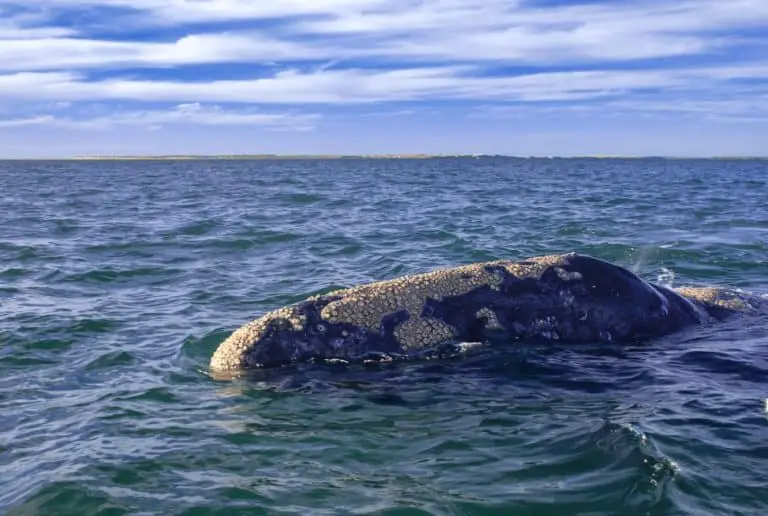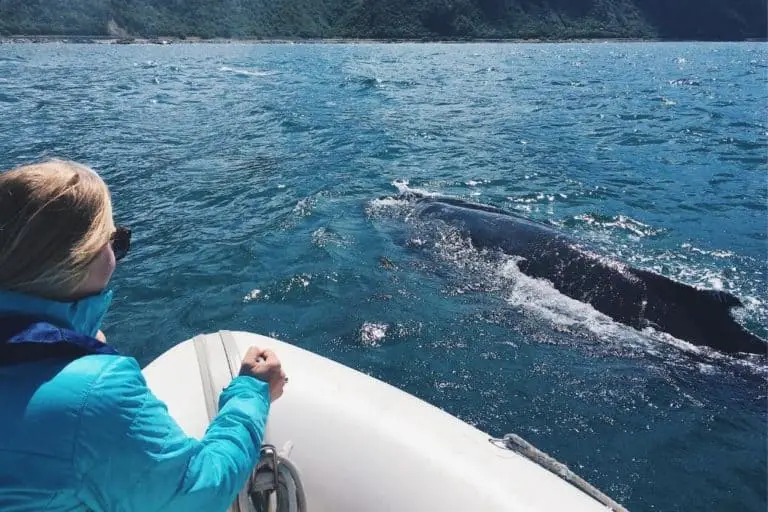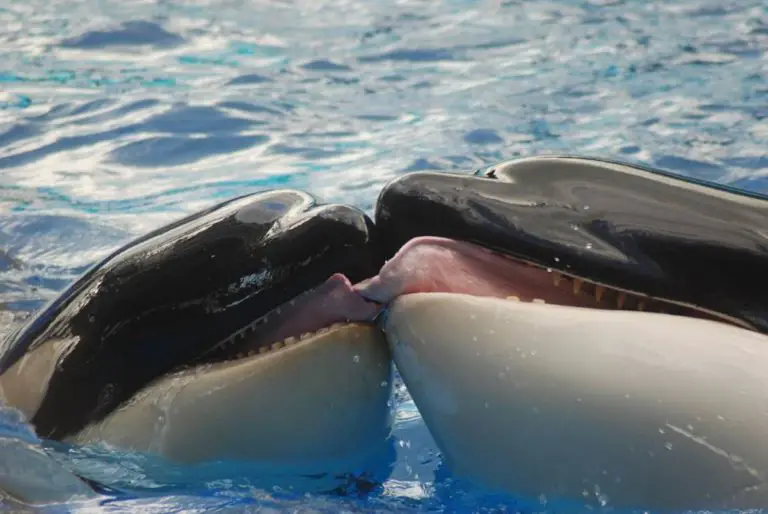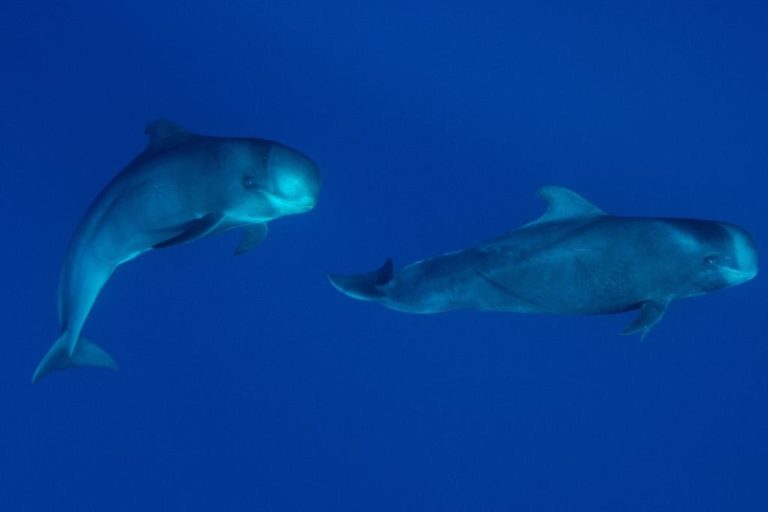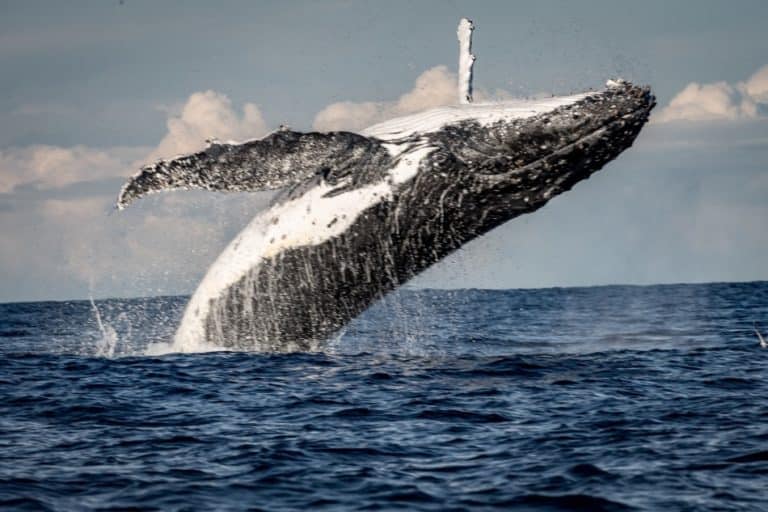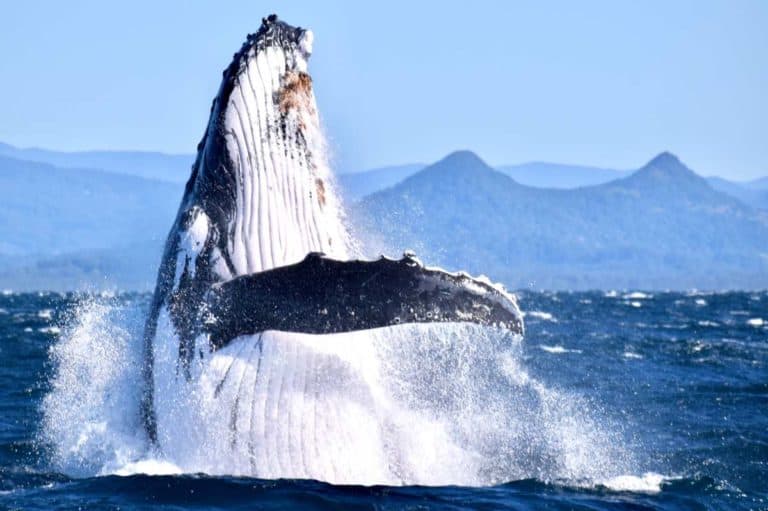Why are whales afraid of orcas? (The Real Reason)
It’s no secret that whales are enormous creatures. But despite their size, they’re afraid of orcas, or killer whales, to give them their scientific name.
- Why are whales afraid of Orcas?
- And what makes these small whalelike animals so dangerous?
Let’s find out!
Orcas live in oceans worldwide and have a wide variety of prey species, including fish, seals, turtles, and other types of sea life.
They also sometimes feed on larger marine mammals like dolphins or even smaller whales. This diet makes them hunters with skills far exceed those of other predators in the water, but how do they do it?
Sea creatures like whales are at risk of attack from predators who use echolocation, also known as sonar.
Orcas produce clicking noises that help them find prey by creating sound waves underwater and seeing the size of an object based on how long it takes for the echo to return. Whales can actually hear orcas before they see them.
So, why are whales afraid of orcas? Whales are afraid of orcas because they may kill them by torpedoing from below at high speeds or by ramming their sides with their heads. Orcas have the most prolonged teeth globally and fangs that can be longer than 3 inches when their mouths are closed, making whales defenseless against these predators.
Why are orcas dangerous for whales?
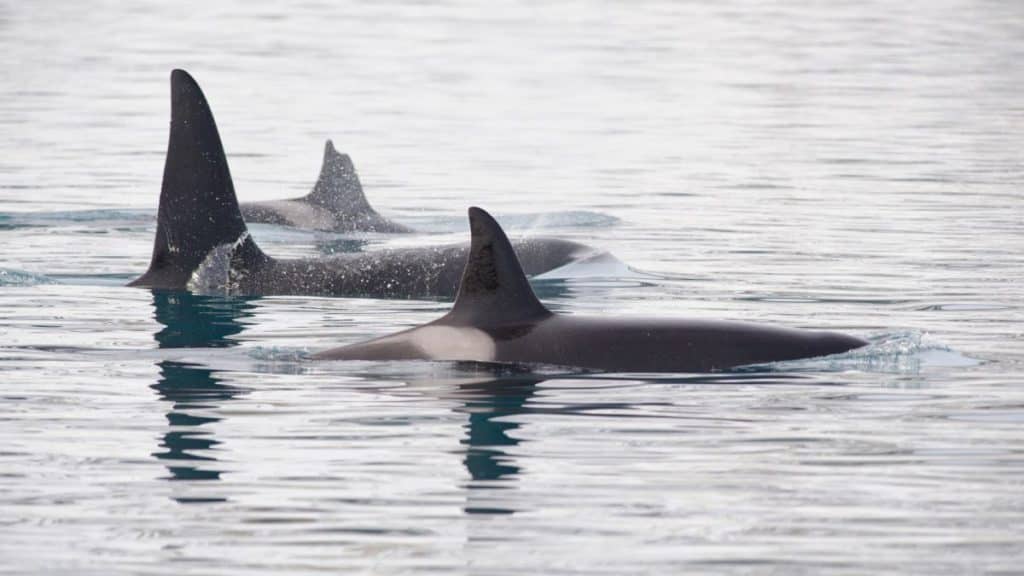
They may kill the whale by torpedoing it from below at high speeds or ramming its side with their heads to crumple its side bones.
Whalebones are very thin in their outer layer, which is called the “cortex” by scientists. The cortex is only one centimeter thick in this area.
After being hit with a large amount of momentum, the whale’s side cortex breaks apart.
Whales are enormous animals that weigh up to 80 tons or more, but some orcas have evolved into “hyper-predators” that can take down larger prey than themselves. They are very well equipped to take down large marine mammals.
Whales have countermeasures against other predators such as polar bears and sharks, but no known marine mammals can fight against orcas except humans.
Orcas also attack small dolphins and porpoises, and sometimes they prey on sea lions and fur seals.
Whale corpses usually sink down to the bottom of the seabed when orcas are finished feeding on them. If an orca takes down a giant whale, it will provide on that for weeks, maybe even months.
In Japan, where whaling is a controversial topic, some Japanese fishermen say that orcas appear when whales are being harvested because those animals want to feed on whale carcasses.
Why do orcas hunt whales?
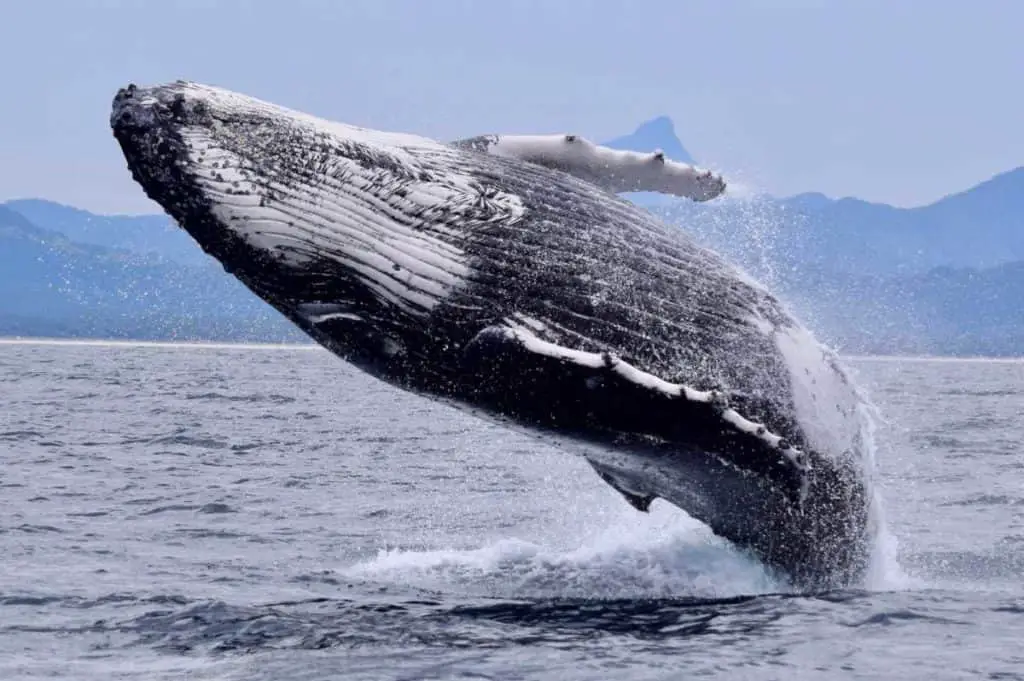
The simple answer is to eat them, but there are other reasons why orcas hunt whales. Orcas are well equipped for hunting whales.
They have huge teeth, which they use to grab the flesh of their victims. An orca can eat up to 227 kilograms (500 pounds) in one day. They mainly eat fish, seals, and gigantic whales. The largest of all the orcas are powerful and intelligent hunters.
They hunt in groups called pods and work as a team to find and attack their prey.
They can even beach themselves to catch seals on land! An interesting theory suggests they developed these hunting techniques by copying others, such as sharks who hunt in this way.
They are very patient hunters. Orcas can swim around a pod of whales for hours, waiting for an opportunity to catch one that is separated from the others or hasn’t noticed them yet.
When they find one, they sound (go deep) and gather speed to ram it with their heads. They use their tails as rudders and steer themselves into the side of their prey. This stuns the animal, and it becomes easy for them to drown it or shake it to death.
Orcas target significantly older animals than young ones because they have more blubber (fat), an excellent food source. They generally hunt whales between 10 and 20 times their own weight!
How do whales avoid orcas?
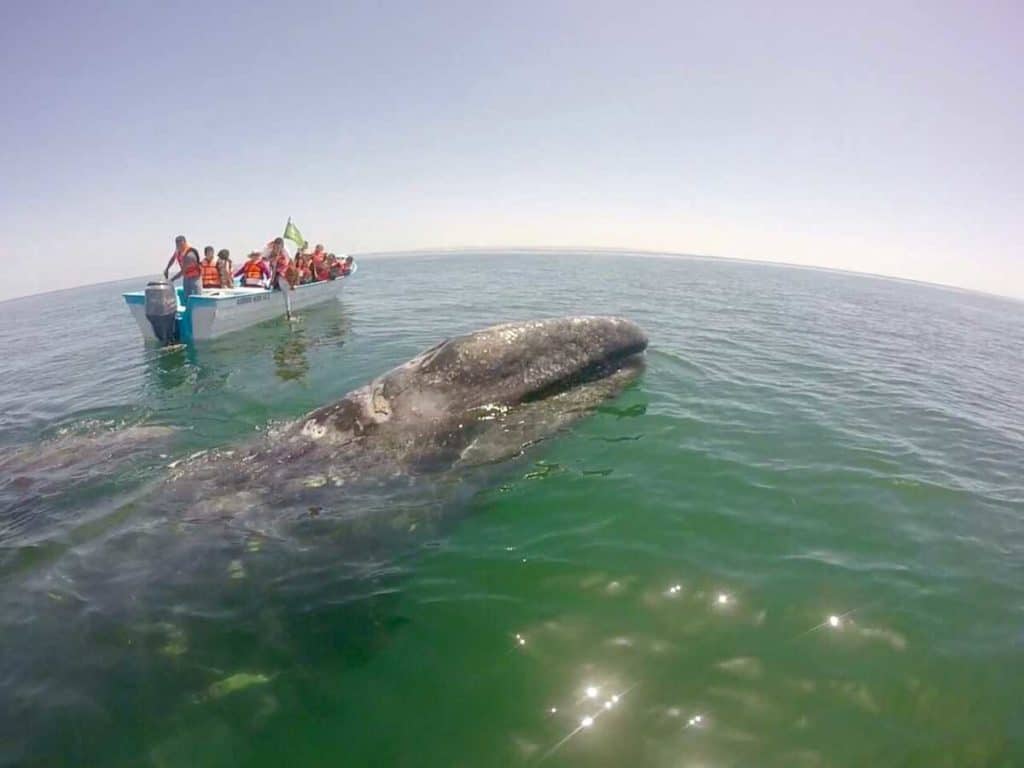
When resting at the surface or spending a prolonged time at it, many whales face into the wind and keep a vigilant eye out for orcas.
Whales also often swim away from areas where orcas have been sighted or killed another whale.
In some cases, groups of baleen whales will stay very close to each other when resting so that they can utilize each other’s “watchmen.” ,
The group will quickly dive to avoid attack or move away from the area when orcas are seen. Baleen whales do not have the speed to outrun orcas but can dive deep enough to escape an ambush.
In several documented cases, baleen whales were found with killer whale tooth marks on their flukes and flippers, suggesting that they had been the victim of a failed predation attempt.
The most detailed observations and descriptions of killer whales hunting baleen whale prey have come from Antarctica and New Zealand.
Orcas in both regions have been observed ramming the flukes and heads of large right whales to stun them or knock them off balance. They then grab their lower jaws and torsos with their teeth, often drowning the prey.
Adult blue whales are also believed to be among the orcas’ prey, although no instances of predation on this species have been witnessed.
Whales are typically more at risk when young or weak due to health problems, injury, or parasite infestation.
When sick individuals are caught, they are typically killed in minutes by groups of orcas who “test the waters” with their teeth before ripping large chunks of meat off the prey.
Whale deaths caused by killer whales have been confirmed for dolphins, pilot whales, minkes, sei whales, and gray whales.
